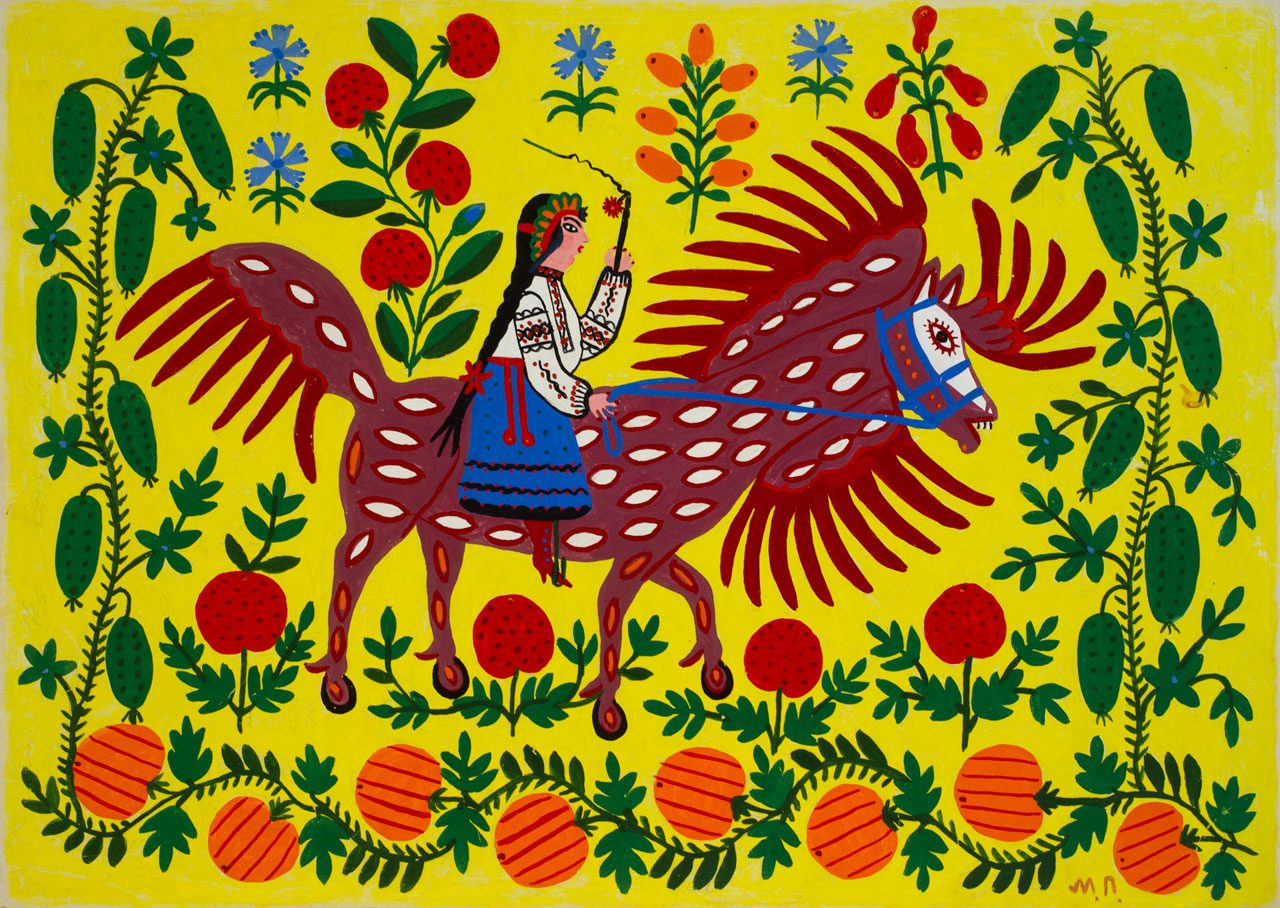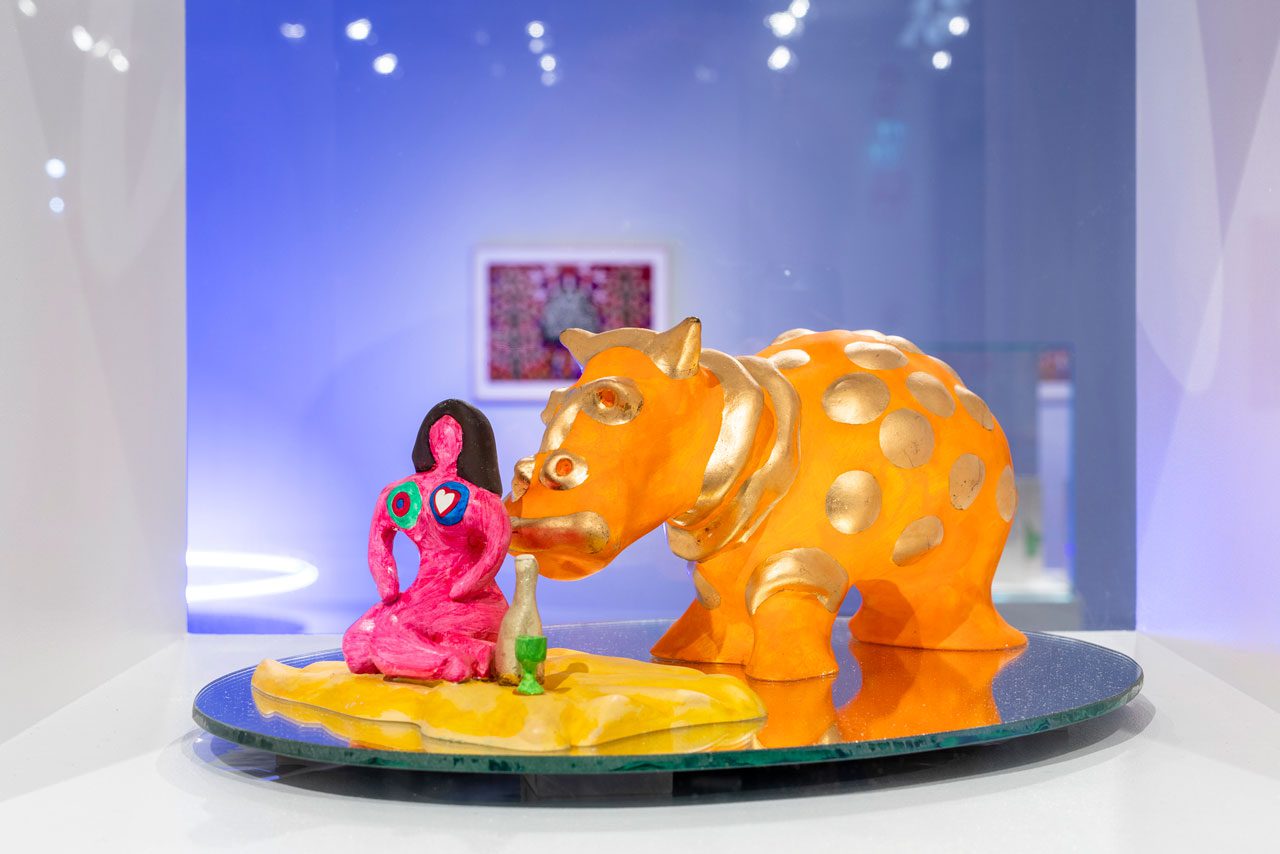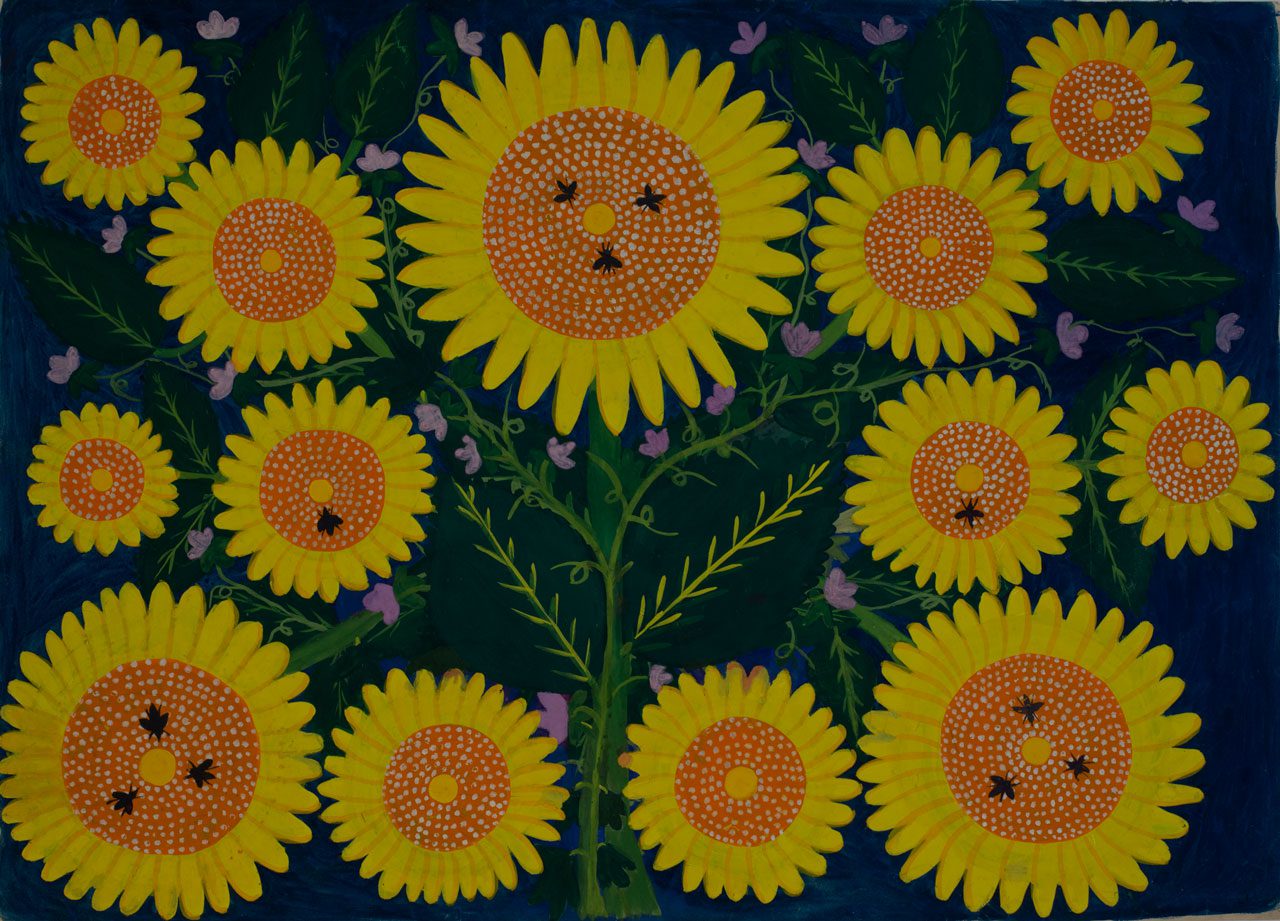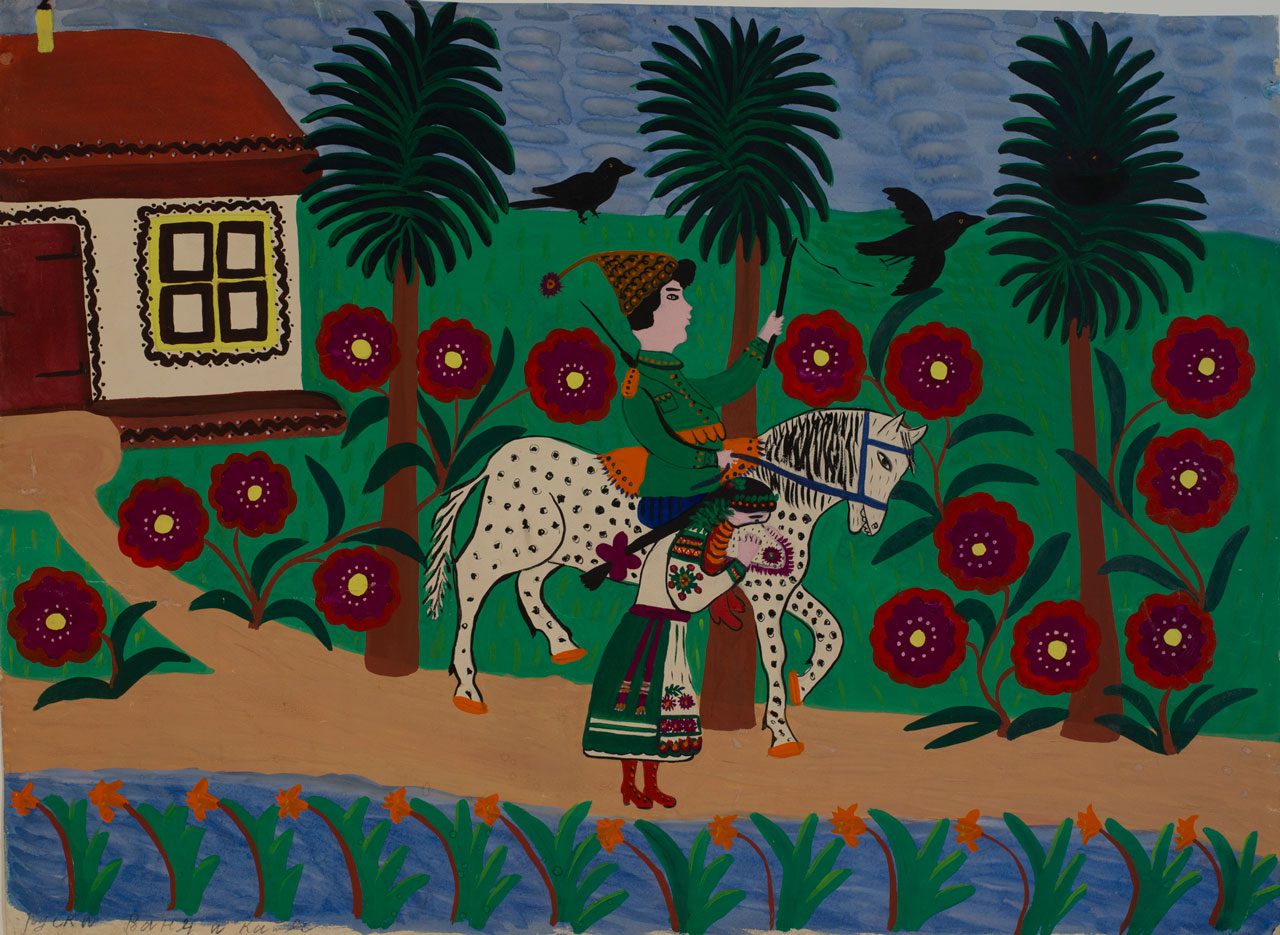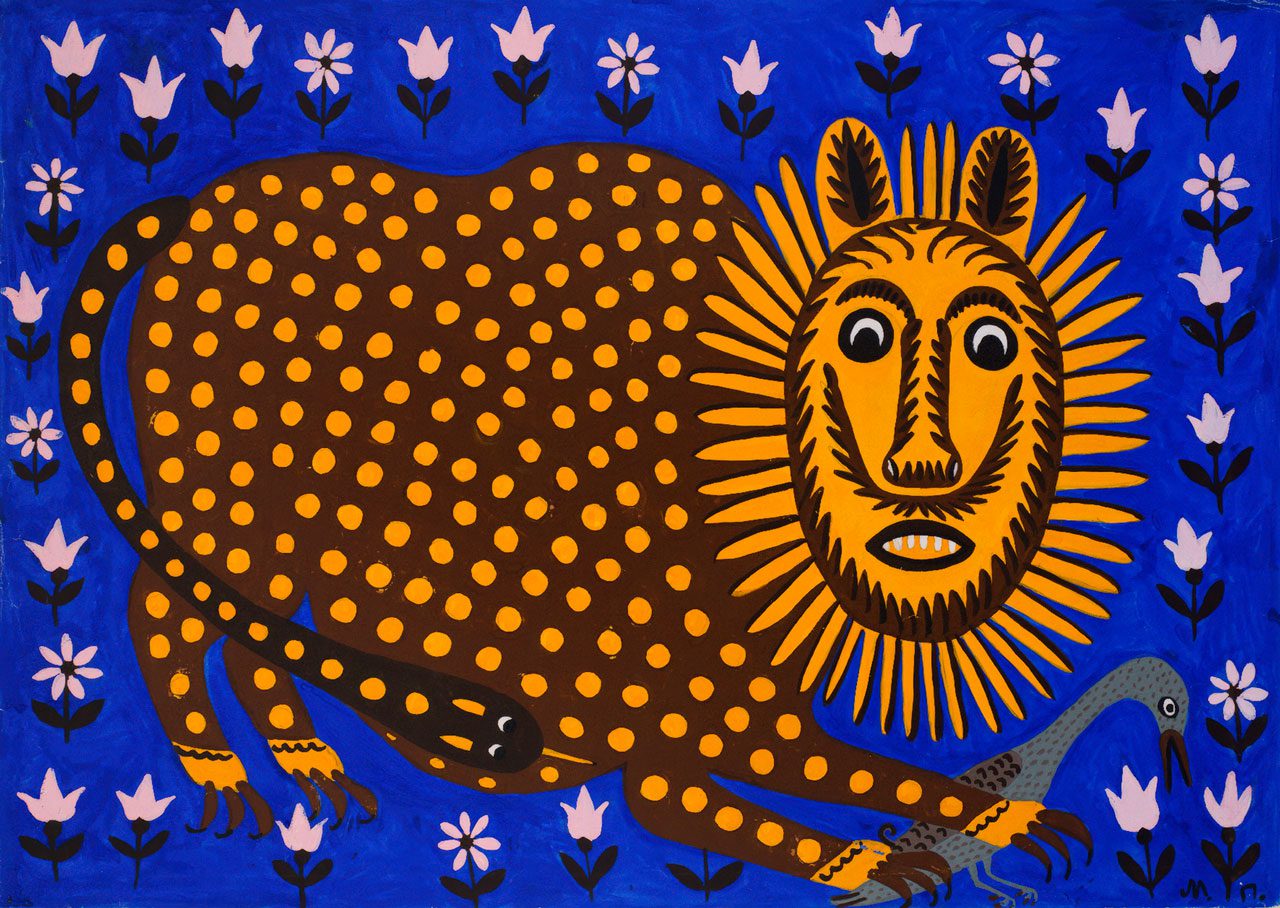PRESENTATION: The Fantastic and Horrific Maria Prymachenko and Works from the Collection
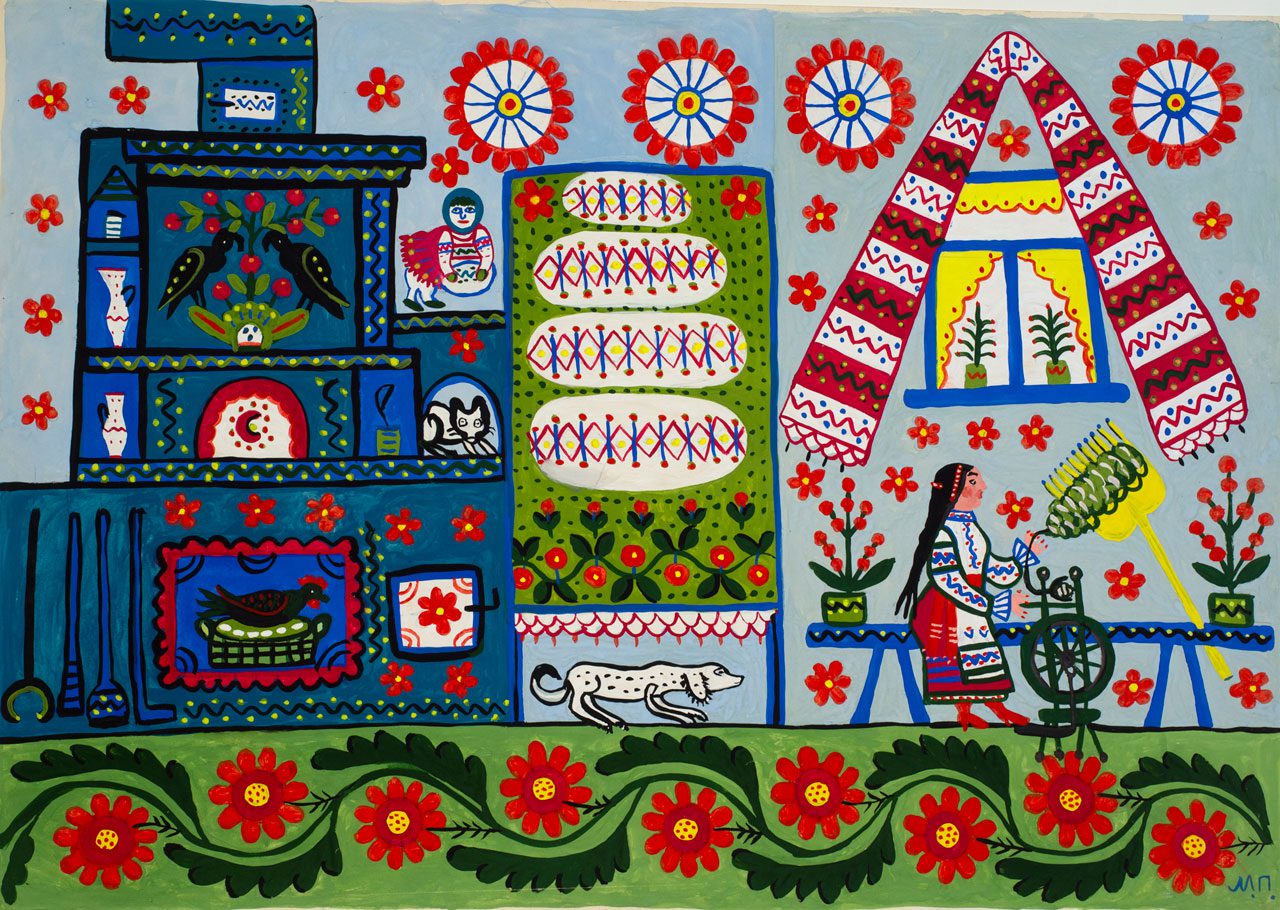 For over 60 years, Maria Prymachenko created art based profoundly on her Ukrainian upbringing and wildly creative imagination. Despite having no formal art training, Prymachenko over the years was able to create a wide range of art: drawings, paintings, ceramics, illustrations, and even embroidered garments. She was known during her lifetime for her brilliantly colored and inventive scenes of animals covered in riotously hued, almost psychedelic patterns.
For over 60 years, Maria Prymachenko created art based profoundly on her Ukrainian upbringing and wildly creative imagination. Despite having no formal art training, Prymachenko over the years was able to create a wide range of art: drawings, paintings, ceramics, illustrations, and even embroidered garments. She was known during her lifetime for her brilliantly colored and inventive scenes of animals covered in riotously hued, almost psychedelic patterns.
By Dimitris Lempesis
Photo: Moderna Museet Archive
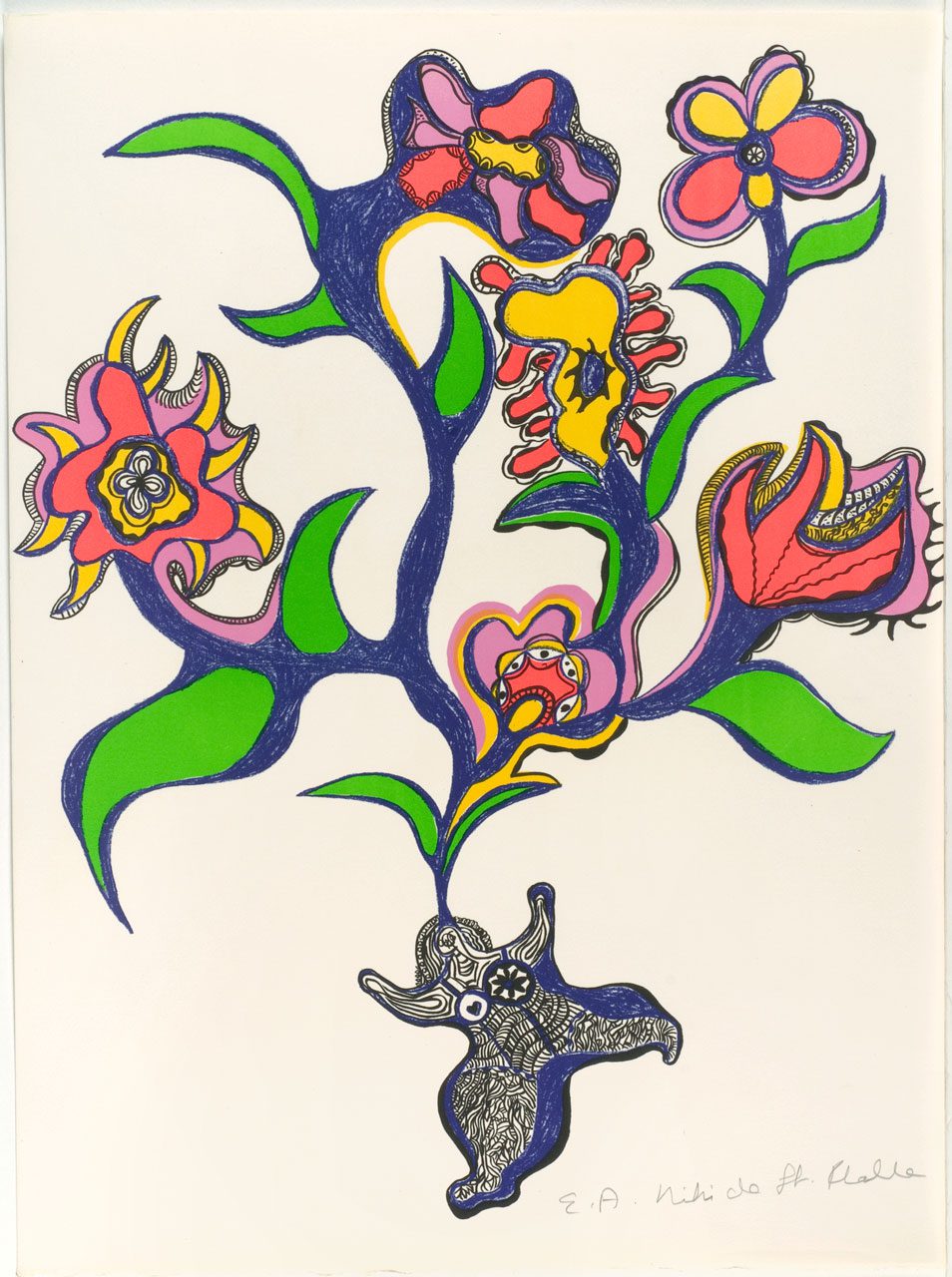
Additional themes in Maria Prymachenko body of work included traditional village life, the Ukrainian landscape, and flowers. Always drawing on village traditions and later dreams for inspiration, Prymachenko also included creative critiques about various dramatic social events in her work. The nature around her, everyday life and celebrations, fairy tales and folk songs are part of Maria Prymachenko’s painted world, expressed in pictures and poetic titles that give an expanded meaning. The artist exhibited extensively and started an informal school. During Prymachenko’s lifetime, folk art was encouraged and used for various political purposes. After gaining attention and receiving an invitation to the experimental workshop in Kyiv’s city museum she met and worked with the artists of her time and increased her choice of materials. In the exhibition “The Fantastic and Horrific – Maria Prymachenko and Works from the Moderna Museet Collection”, Maria Prymachenko’s paintings meet 20th-century works from the Moderna Museet Collection and works by two contemporary artists, Runo Lagomarsino and Susanna Marcus Jablonski. Paintings on paper became Maria Prymachenko’s primary mode of expression, and now more than 40 of her works, created over a period of 50 years are presented. Despite a life of vulnerability and personal losses, Prymachenko celebrates life in her art. She depicts agricultural traditions and paints luxuriant plants, but among her motifs there are also beasts – hybrid creatures with sharp claws, staring eyes and gaping mouths. The exhibition proceeds from the fact that both Pablo Picasso (1881–1973) and Maria Prymachenko participated in the International Exposition in Paris in 1937. That was where Picasso showed his painting “Guernica”, which, like many of Prymachenko’s artworks, has become a symbol of peace. Several of the works that Prymachenko exhibited in 1937 are included in the exhibition. Besides war, Prymachenko experienced famine and catastrophe. Maria Prymachenko was born in 1909 into an artistically talented rural family in the village of Bolotnia. Her mother did embroidery, her father was a carpenter, and her grandmother painted Easter eggs. Just like another outstanding female artist, the surrealist painter Frida Kahlo, Prymachenko suffered from polio as a child, and she also wore long, hand-embroidered skirts to conceal her paralyzed leg. She learned to draw, paint, and embroider at home. Even though she never acquired any artistic qualifications and had just four years of primary education, she became a professional embroiderer at the turn of the 1920s and 1930s. For the next few years, she worked in nearby Ivankiv until her talents were discovered in 1935 by Tetiana Floru, a textile artist and embroiderer linked to the Ukrainian Folk Decorative Art Museum in Kyiv. Some say she was impressed by Prymachenko’s embroidered shirts on sale at an Ivankiv market. Others claim that Floru was sent out by the Soviet authorities (initially, USSR cultural policy welcomed naïve folk art) to travel around the villages in search of folk artists and was enchanted by Maria’s embroidery on display at a cultural center. Flora invited Prymachenko to a workshop at the museum’s Central Experimental Workshop. Alongside other creators, professional and non-professional, the artist produced works for the First Soviet Folk Art Exhibition, which opened in Kyiv in 1936 and was later presented in Moscow, Leningrad, and Warsaw. A year later, selected works by Prymachenko were sent to the World’s Fair in Paris. While the brilliant painter’s works were traveling around the world, she went to Kyiv for treatment. After several orthopedic operations, her mobility greatly improved, allowing her to return to her beloved Bolotnia. After World War II, USSR authorities’ attitude to art and folk artists changed. Folklore lost its innocence as officials began to suspect it was an expression of Ukraine’s desire for independence. Prymachenko avoided the Stalinist purges, but she had to work on a collective farm to support herself and her son, as her husband had been killed during the war. Undeterred by her tough life, she tried to remain active by embroidering and drawing, and gradually she returned to painting. Though still dominated by fantastic animals, colorful flowers, and rural scenes, her work also began to incorporate satire aimed at the authorities. The bucolic idyll evaporated, and her fairytale animals started to resemble the political leaders responsible for war, poverty, and the deaths of millions of people. Prymachenko’s works reacting to the social reality were pure contemporary art. Nevertheless, she is best known for her paintings inspired by Ukrainian legends and traditions, which reference ornamental folk designs, and the old sayings and songs quoted in many of her works’ titles. Her drawings and gouaches are ablaze with color and teeming with incredible creatures, birds, and plants. Prymachenko’s animals often have human faces, so their intentions and characters are easy to read: some look kind, joyful, warm, charming, and funny, while others are sad and mistrustful. The Ukrainian artist’s birds are always portrayed respectfully as winged messengers bringing good tidings, heralding the spring and rebirth of life. They usually appear in pairs, symbolizing love and freedom. Their wings are often adorned with plant motifs, particularly flowers, which—alongside art—were her most important means of feeling and self-expression. On the night of April 25 to 26, 1986, one of the reactors exploded at the Chernobyl nuclear power plant. Prymachenko’s native village of Bolotnia lay less than fifty kilometers away, in the exclusion zone, but the artist refused to leave. The authorities agreed to let her stay, in recognition of her life’s work and poor health. So began her “Chernobyl” series. Once more, the creatures in Prymachenko’s paintings looked terrified, furious, and sad. At nearly seventy, the painter again proved that, beyond so-called naïve art, she was also a conscious artist, observing the surrounding reality with a careful, critical eye. She passed away in her native Bolotnia in 1997.
Participating artists: Alexander Calder, Marc Chagall, Lena Cronqvist, Lourdes Fernandez, Susanna Marcus Jablonski, Asger Jorn, Runo Lagomarsino, Lou Laurin-Lam, Egon Möller-Nielsen, Amelia Peláez del Casal, Pablo Picasso, Lars Pirak, Niki de Saint Phalle, Maria Prymachenko, Max Walter Swanberg, Adja Yunkers.
Photo: Maria Prymachenko, Marusya was Spinning Flax, 1984 ©Maria Prymachenko Family Foundation Courtesy The National Museum of Decorative Art of Ukraine
Info: Curator: Elisabeth Millqvist, Moderna Museet Malmö, Ola Billgrens plats 2–4, Malmö, Sweden, Duration: 21/9/2024-30/8/2025, Days & Hours: Tue-Wed & Fri-Sun 11:00-17:00, Thu 11:00-19:00, www.modernamuseet.se/
